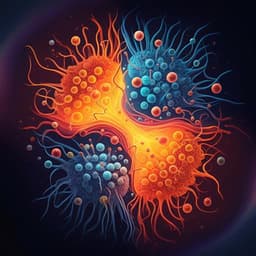
Space Sciences
Dark microbiome and extremely low organics in Atacama fossil delta unveil Mars life detection limits
A. Azua-bustos, A. G. Fairén, et al.
Discover the intriguing findings from researchers including Armando Azua-Bustos and Alberto G. Fairén, who unveil a striking connection between Earth and Mars through the study of the Red Stone site. This arid fan delta, teeming with microorganisms and elusive biosignatures, sheds light on the potential for past life on the red planet and emphasizes the necessity of returning samples to Earth for further exploration.
Playback language: English
Related Publications
Explore these studies to deepen your understanding of the subject.







